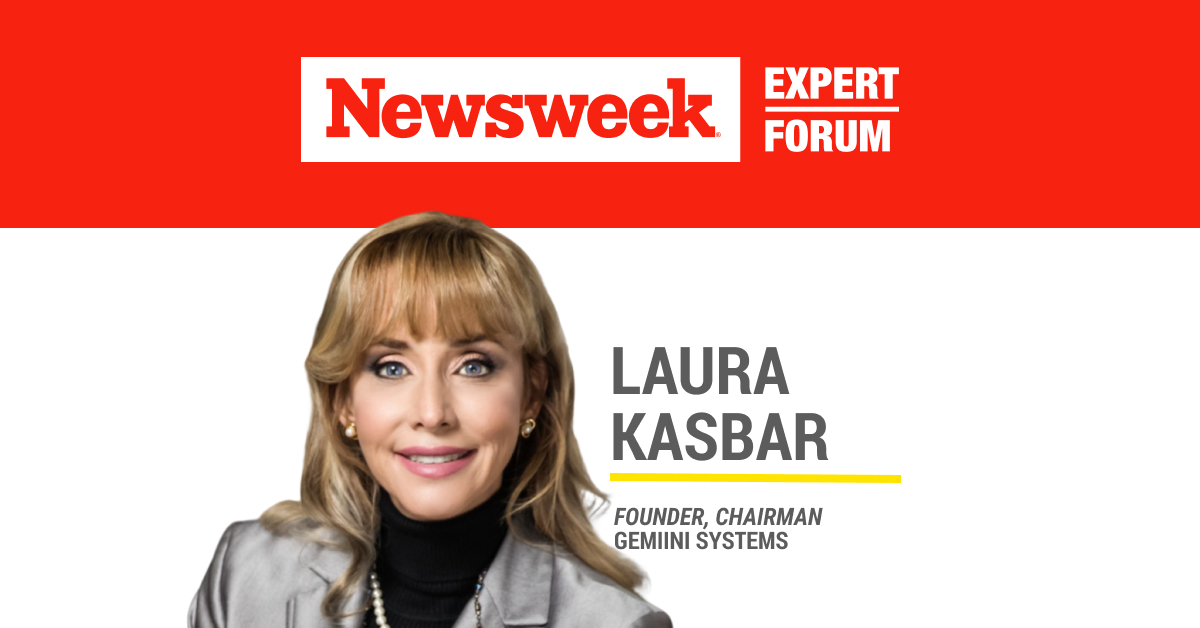Twenty years ago, when Laura Kasbar‘s boy-girl twins were three years old, both were diagnosed with autism: Her daughter’s case was on the moderate end of the spectrum, while her son’s was “one of the most severe you could have,” Kasbar says. Both children immediately began therapy to try to teach them verbal skills. While her daughter made some progress, her son remained non-verbal after many months of almost non-stop therapy. “Everyone told me he may never speak,” Kasbar recalls.
However, the tenacious mom of seven was unwilling to accept this prognosis. Rather than continuing to hope that the current methods would yield results, Kasbar had an idea: She noticed that her son didn’t look at her face at all, as is common with autism. She knew from her own experience of studying abroad how important it is to see the speaker’s mouth when learning language. She recorded her mouth clearly enunciating words, such as “cup,” or “ball,” while holding the items in question in the video.
Kasbar’s family’s story has a happy ending. She recalls that within the first day, she started seeing significant improvements in her twins’ speaking, and within weeks, months and years, her children met and far surpassed doctors’ original expectations for their verbal attainment and education. “By the time they were eight years old, they crossed the average language mean, so they were learning at a rate about three times faster than typical developing peers,” she says. “And then they went to college when they were 16. Now, they’re both independent.”
Kasbar’s family’s experience showed her the need for an array of tools to approach language acquisition in autistic children — tools that, she asserts, many parents are unaware of, or are unsure how to access. With this goal of enabling parents overwhelmed by a new autism diagnosis to support their children, she began teaching other families her methods, and ultimately she and her oldest son started their own company: Gemiini, named for the twins whose experience inspired the entrepreneurial venture.
The project experienced some growing pains at the outset. “I started teaching people how to make their own videos, but nobody was able to consistently make them on their own,” she recalls. “I went all over the world trying to teach people, and the kids were starting to talk — and still the parents just didn’t make the weekly videos.” Eventually, Kasbar realized that creating these videos was a service she could provide overwhelmed parents. “Since then we have over 200,000 proprietary videos that we’ve created, a huge platform,” Kasbar says. “There’s just so much content. And we sell our product in over 40 different countries around the world.” She notes that Gemiini’s approach has been accepted as evidence-based by both governmental and private institutions, and is now covered by Moda Health of Oregon and by various Medicaid waiver programs around the United States.
Kasbar attributes her product’s success in part to the way it works in alignment with natural tendencies many autistic children have (rather than forcing them to fundamentally adapt their behaviors to engage with therapy), such as a common discomfort with making eye contact. “Most autistic people avoid faces at all costs,” Kasbar says. She says there are many reasons for this, but the upshot is undermined efficacy of some of the educational tools available. “If they’re not looking at someone, they’re not seeing their mouth move,” she says, explaining why tools that require kids to maintain eye contact often meet setbacks. “And that essential language learning part of their brain is not lighting up.”
In addition, “It’s been shown that with autism, there’s a little bit of a delay between when you see something and then you hear it,” Kasbar explains. These “out of sync” neurological pathways can “disrupt their comprehension, their language memory, and their facial recognition.” Gemiini’s videos are formatted to address this asynchronicity: “We focus on moving closer to the mouth,” she says, to enable users to clearly see—in slow motion — the movements a person’s mouth makes in pronouncing certain words, while simultaneously hearing those words spoken aloud.
An added benefit of Gemiini’s program is that by routinely watching videos that first focus on speakers’ mouths and then on their faces in a slow and gradual progression, users may also gain more comfort with looking directly at faces. “We’re speeding up their trajectory of acquiring language, making them more confident,” she says. “And then because they get used to looking at people’s faces on the camera in 2D, the step to 3D becomes much easier. One of the first things parents tell us is, ‘Oh my gosh, eye contact is through the roof.’”
But beyond simply familiarizing parents with Gemiini’s product and its success stories, Kasbar wishes for families navigating autism to be more aware of the options that are available to them. “The expectations of the kids can be very low, because of what’s been possible in the past,” she says. In arguing for alternative approaches, she sometimes feels like many decision-makers are unaware of the potential for language gains for both autistic children and adults.
But Kasbar is emphatic that her work is to let parents know what can be possible if they find and leverage the right approaches for their families. “Autistic kids are totally capable of learning more, if you only get their attention,” she says. “A lot more.”
This content was originally published here.
